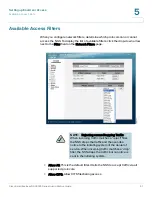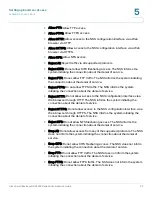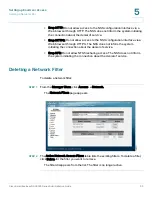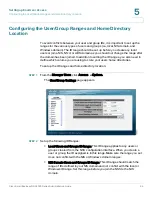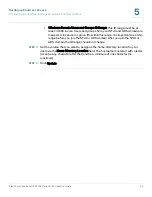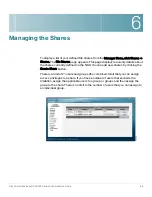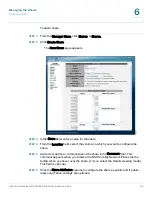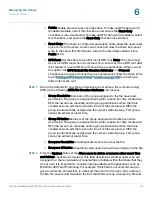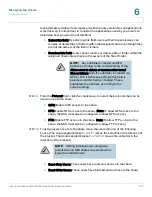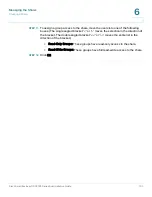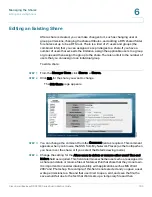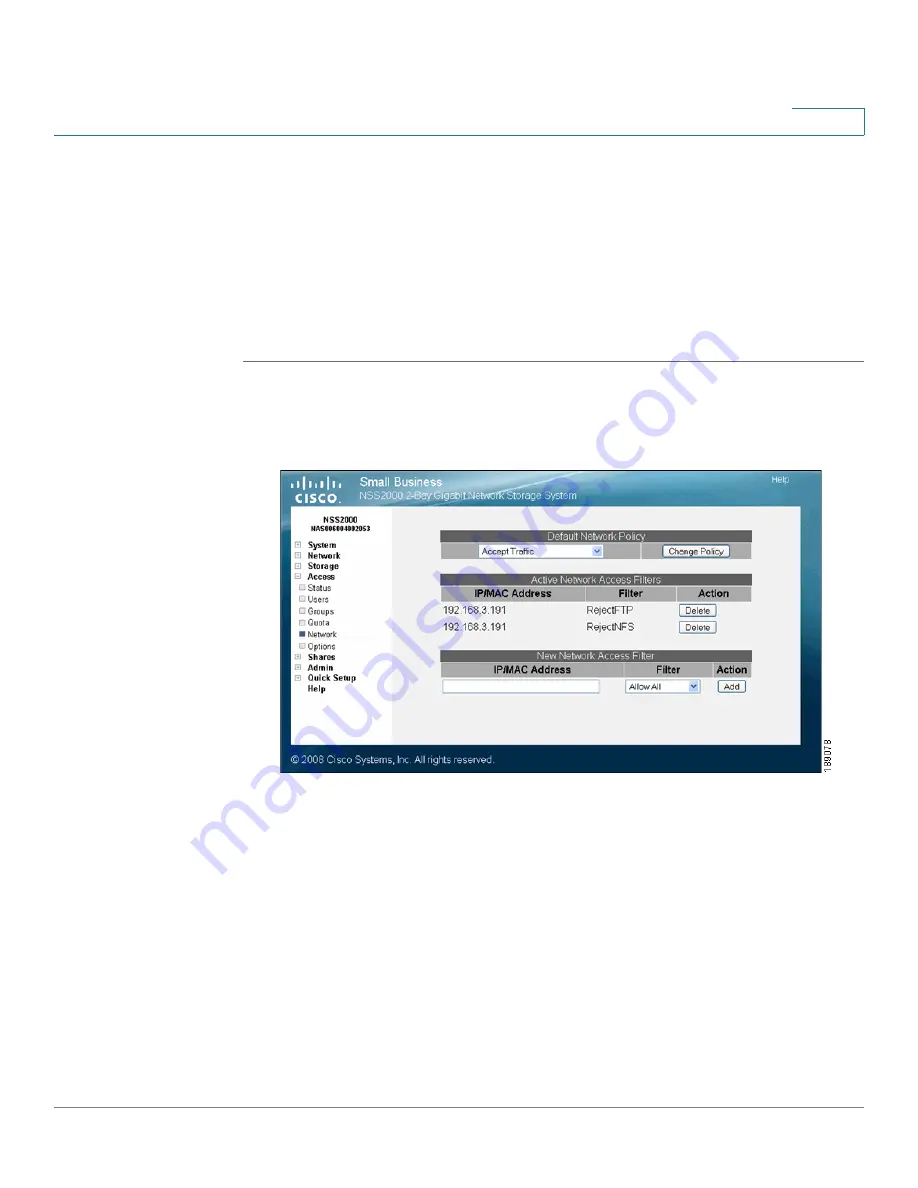
Setting up End-User Access
Defining the Default Network Policy
Cisco Small Business NSS2000 Series Administration Guide
88
5
Defining the Default Network Policy
The default network policy is the overarching policy that defines the gateway for
communication to the NSS. It specifies how traffic that is not covered by defined
filters is handled. The default policy can be defined to either accept or reject such
traffic.
To define the default network policy:
STEP 1
From the Manager Menu, click Access
Network.
The Network Filters page appears.
STEP 2
From the Default Network Policy drop-down menu, click one of the following:
•
Accept Traffic: Allow the NSS to communicate with all initiating hosts.
Select this option if you have a limited number of systems that you want to
disallow. When you set up your individual filters, select those filters that
"disallow" (i.e., drop or reject) certain types of connections. For example, you
might want to disallow CIFS connections but allow all other types.
•
Drop Traffic: Disallow the NSS from communicating with any initiating
systems. Select this option if you have a limited number of systems that you
want to allow to communicate with the NSS. When you set up your filters,


















